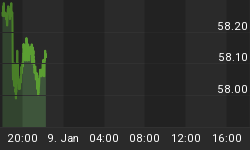First there was Tether; a controversial dollar-backed cryptocurrency by crypto exchange firm, Bitfinex. Then came Petro, the industry’s first oil-backed crypto issued by the Venezuelan government last year. And now we might be about to see the first gold-backed cryptocurrency—by a central bank, no less. According to Russian news agency, TASS, Russia’s central bank, the Bank of Russia will consider issuing gold-backed cryptocurrencies—a rather strange move considering how cryptocurrencies are generally anathema to central banks.
Shot in the arm
But before crypto bugs can start doing a round of high fives, the head of the Bank of Russia, Elvira Nabiullina, has revealed that the cryptocurrencies are not meant for retail use but rather for conducting big mutual settlements for entities with global jurisdictions.
In other words, only the heavyweights will get to lay their hands on them. Further, she says that she still believes that it’s better for countries to develop international settlement systems such as the Eurasian Economic Union (EAEU) framework that use their own national currencies noting the said framework has demonstrated good dynamics.
Finally, she admonishes that the latest twist should not be interpreted to mean that the bank supports a scenario where cryptocurrencies eventually replace fiat in the monetary system.
The Bank of Russia’s latest move is a belated concession that cryptocurrencies do have a place in the modern monetary system, whether banks and financial institutions like it or not. It’s a big shot in the arm for an industry that has endured so much unmerited criticism, animus and outright rejection.
Last month, the Bank of Russia released a policy brief outlining the potential benefits of CBDCs (central bank digital currencies) including being less risky than existing systems and a more liquid asset that can lower transaction costs.
It’s worth noting that the bank cited lack of anonymity as the only major drawback of CBDCs (and possibly cryptos by extension).
Russia’s largest bank is not the only one to endorse cryptos--though it’s the only central bank to-date to expressly say it’s seriously considering launching one.
A couple of days ago, the European Central Bank (ECB) declared that cryptocurrencies are not a threat to the region’s financial stability. Closer home, JPMorgan launched JPM Coin in February, a stablecoin meant for clients of its wholesale payments business. Each JPM Coin is pegged to a dollar.
Finally last year, a banking consortium launched We.Trade, a challenger to Ripple, the cryptocurrency that facilitates interbank transfers.
Commodity-backed cryptos survive
Recently, CoinTelegraph reported that Bank of Russia was discussing mutual settlements with Venezuela in Petro and the Russian Ruble. That will certainly mark a major milestone for Maduro’s infantile cryptocurrency.
Related: Is This The World’s First Truly Democratic Stock Exchange?
When President Maduro’s beleaguered government launched Petro last year, we dismissed it arguing it was destined to fail due to lack of trust from the community with commodity-backed cryptos having their fair share of scandals. What we failed to anticipate was the brutal determination by the Venezuelan government in making sure it’s brainchild not only survives but thrives.
Since then, Maduro has elevated Petro to an alternate official currency while using underhand tactics such as converting pensioners’ payments to the cryptocurrency without their consent in a bid to make it go mainstream. Popular crypto blog CCN reported in January that Petro seems to be alive and well despite lack of evidence for the oil stockpiles that are supposed to back it up and also being user-unfriendly.
And now Venezuela’s Petro is about to get a new lease on life after teaming up with another renegade. Both countries eschew the dollar viewing it as being too dominant and hope the new cryptocurrency will help them ditch the American currency.
Yet another stablecoin—the dollar-backed Tether—seems to be doing well, too, despite its share of controversies. A month ago, New York AG charged Bitfinex with dipping into its Tether cash reserves to cover up internal losses.
The fact that many commodity-backed cryptos seem to be surviving major trust issues is almost a validation of the whole idea of having a physical commodity back-stopping a digital currency.
The new ones by Russia’s central bank will have a much lower hurdle to clear.
By Alex Kimani for SafeHaven.com

















